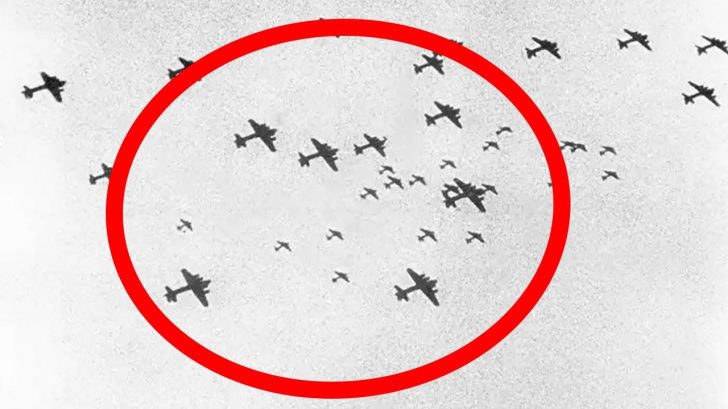Over 376 B-17 Flying Fortresses were tasked to pierce the industrial heart of Germany and take down the Luftwaffe’s manufacturing capabilities. Squadrons of P-47 Thunderbolts were asked to escort the bombers, but German Messerschmitt Bf 109s swarmed them.
By then, the Thunderbolts have also reached their fuel limit, and they were forced to abandon the B-17s to their fate.
Setting the Stage
In preparation for D-day, the Allies had to cripple the Luftwaffe’s manufacturing capabilities. If the assembly plants weren’t destroyed before the Normandy landings, the Germans would likely overwhelm the landing forces.
Going In
On August 17, 1943, nearly 400 Flying Fortresses took off and were protected by three friendly P-47 squadrons, as the bombers pierced the external German aerial defenses.
However, the German’s early warning system was alerted of the incoming raid, summoning many German squadrons to intercept the attack.
Crushing Guilt
A dogfight quickly ensured with the Thunderbolts engaging the enemy fighters. But soon, they quickly found themselves overwhelmed, allowing several German warplanes to freely attack the bombers.
The P-47 regrouped, and engaged the Germans again, forcing them to momentarily retreat. However, the P-47s soon reached their fuel limit and were forced to turn back. Several more German fighters descended but the P-47s couldn’t do anything but leave.
Bloody Hundred
Casualties began to climb on both sides, with the 100th bombardment group suffering the most losses, earning the nickname, “The Bloody Hundred.”
Soon, the Germans ran out of ammunition, and the Allies found themselves alone, and about to reach their objective- Regensburg.
The weather in Regensburg was favorable with flak defenses weaker than expected. The B-17s then watched as the payloads they released quickly obliterated countless Luftwaffe factories.
Aftermath
Eight Air Force lost 60 bombers and over 100 men, and over a hundred bombers were severely damaged. Moreover, the strikes in the cities only caused an 8-week production delay.
Nevertheless, even if the Allies couldn’t have known at that time, the raid destroyed one of the factories manufacturing pieces of the Messerschmitt Me 262, the first jet fighter in the world.
Thanks to the operation, the German jet was delayed for months helping the Allies cushion the blow of its eventual incursion into the war.



